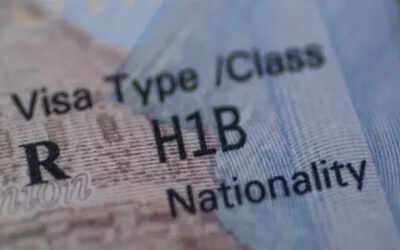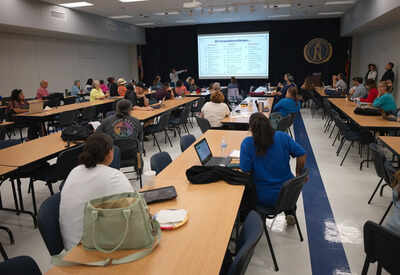Explained: US Congress’ H-1B wish-list to Trump and what they mean for Indian talent

Seven US lawmakers from both Republican and Democratic parties, including, Suhas Subramanyam, Sam T. Liccardo, Jay Obernolte, María Elvira Salazar, Don Bacon, and Greg Stanton, have urged President Donald Trump and Commerce Secretary Howard Lutnick to reconsider the administration’s plan to impose a $100,000 fee on new H-1B visa petitions filed for workers outside the United States. In their letter, they argue that the fee would not prevent abuse of the system but instead hamper innovation, disadvantage start-ups and push highly skilled workers, many from India, towards competing countries, TNN reports.The letter comes amid a growing debate on the future of high-skilled immigration in the United States. India contributes nearly 60% of all H-1B visa holders each year. Thousands of Indian students on F-1 student visas and Optional Practical Training (OPT) programmes rely on H-1B pathways to begin employment in the US. The proposed upfront fee risks complicating transitions for graduates who must return to India for visa stamping.Beyond the immediate impact of the fee, the lawmakers have proposed several targeted reforms aimed at making the H-1B system more efficient and fair. For these US lawmakers, the H-1B visa is not just a paperwork exercise. It underpins the nation’s ability to innovate and compete globally, especially in sectors driven by technology and research.
What are the proposed reforms?
Beyond the immediate impact of the fee, the lawmakers have proposed several targeted reforms aimed at making the H-1B system more efficient and fair. These include:Tougher action against outsourcing firmsThe letter highlights the need to address firms that use H-1B visas to replace US workers with lower-paid staff. These firms, often engaged in mass placement of contract employees, have been criticised for creating artificial demand without contributing to domestic innovation. Stricter audits and enforcement measures could reduce exploitative practices, particularly unpaid benching or sham client letters.For genuine engineering talent, this is positive. Companies that hire for genuine roles will see fewer abuses and a more level playing field. For Indian H-1B workers, the shift could mean a move from large, contract-driven pipelines to direct employment with technology or research firms. Start-ups and deep-tech labs may benefit as they can attract highly skilled employees without competing against mass outsourcing models.Easier visa portabilityVisa portability refers to the ability of H-1B holders to change employers without jeopardising their legal status. Congress has proposed simplifying the process by providing clearer grace periods and immediate work authorisation upon timely transfer filings.This would give Indian H-1B workers more bargaining power and reduce fear during layoffs. Employees could leave problematic employers and join firms that offer better roles or compensation. Fewer “bench traps” would improve working conditions and facilitate career mobility. For the US economy, it could mean a more flexible and productive workforce as talent moves freely to roles that match their skills.Updated wage and skill classificationsCurrent H-1B regulations include multiple wage levels and skill definitions that determine eligibility. Lawmakers suggest modernising these classifications to better reflect current market standards.For mid-to-senior specialists, such as those in artificial intelligence, cybersecurity, robotics, semiconductor design, and site reliability engineering, updated classifications will allow employers to justify higher wages and clearer specialty roles. Early-career graduates and generalist positions may face stricter requirements, raising barriers to sponsorship. The reform would align H-1B hiring with genuine demand for critical skills, ensuring that scarce talent is matched to meaningful roles and enhancing long-term productivity.More reasonable fee structureInstead of a steep $100,000 upfront levy, the proposal recommends a lower, more manageable fee that does not deter start-ups or small businesses. Large corporations may absorb higher costs, but smaller firms often cannot.A saner fee would lower friction for legitimate employers and expand opportunities for Indian talent. Start-ups would be able to take calculated risks in hiring skilled employees, while mass-outsourcing models dependent on volume filing would face higher costs, nudging them toward direct hiring. This approach could encourage a more balanced H-1B ecosystem, supporting innovation without unduly penalising new entrants or critical technology sectors.Stronger enforcement of existing rulesLawmakers have also called for stricter enforcement of current H-1B regulations to ensure compliance and deter misuse.
Expected impacts on Indian H-1B talent
For Indian H-1B workers, these changes are more than policy updates. They could decide who gets ahead, who switches jobs with ease, and who faces tougher hurdles in the US tech and research landscape.
- Visa portability: Easier mobility improves negotiation power and mitigates the risk of layoffs. Employees gain flexibility and can transition between employers without legal hurdles.
- Updated wage and skill tiers: Senior specialists benefit from clearer role definitions and higher wages. Entry-level or generalist applicants may find it harder to secure sponsorship, potentially narrowing initial opportunities.
- Targeted action on outsourcing: Reduces dependence on mass placement and low-wage filings. Direct hiring at product firms and research labs may increase, favouring employees with niche skills.
- Reasonable fee: Smaller firms can continue hiring Indian talent without prohibitive costs. This widens opportunities for genuine placements and supports start-ups in scaling operations.
Who gains and who loses
Not all H-1B workers will feel the changes equally. Some could find new opportunities and higher pay, while others may face tighter competition and tougher conditions.Likely winners:
- Mid- to senior-level engineers with specialised skills in AI, cybersecurity, robotics, chip design, safety, and site reliability engineering.
- H-1B workers at product companies, research labs, or non-profit organisations.
- Employees seeking to switch employers or recover from layoffs.
Likely pressured:
- Entry-level and generalist candidates.
- Large third-party outsourcing firms relying on low-wage H-1B filings.
- Employers dependent on volume petitions for marginal or generic roles.
High-skilled immigration has historically strengthened the US economy. Nearly half of unicorn start-ups were founded by immigrants. By combining smarter enforcement with portability, updated wage classifications, and a balanced fee structure, the US can continue to attract global talent while protecting domestic innovation. The outcome of this debate will have direct consequences for tens of thousands of Indian professionals aspiring to work in the United States.






